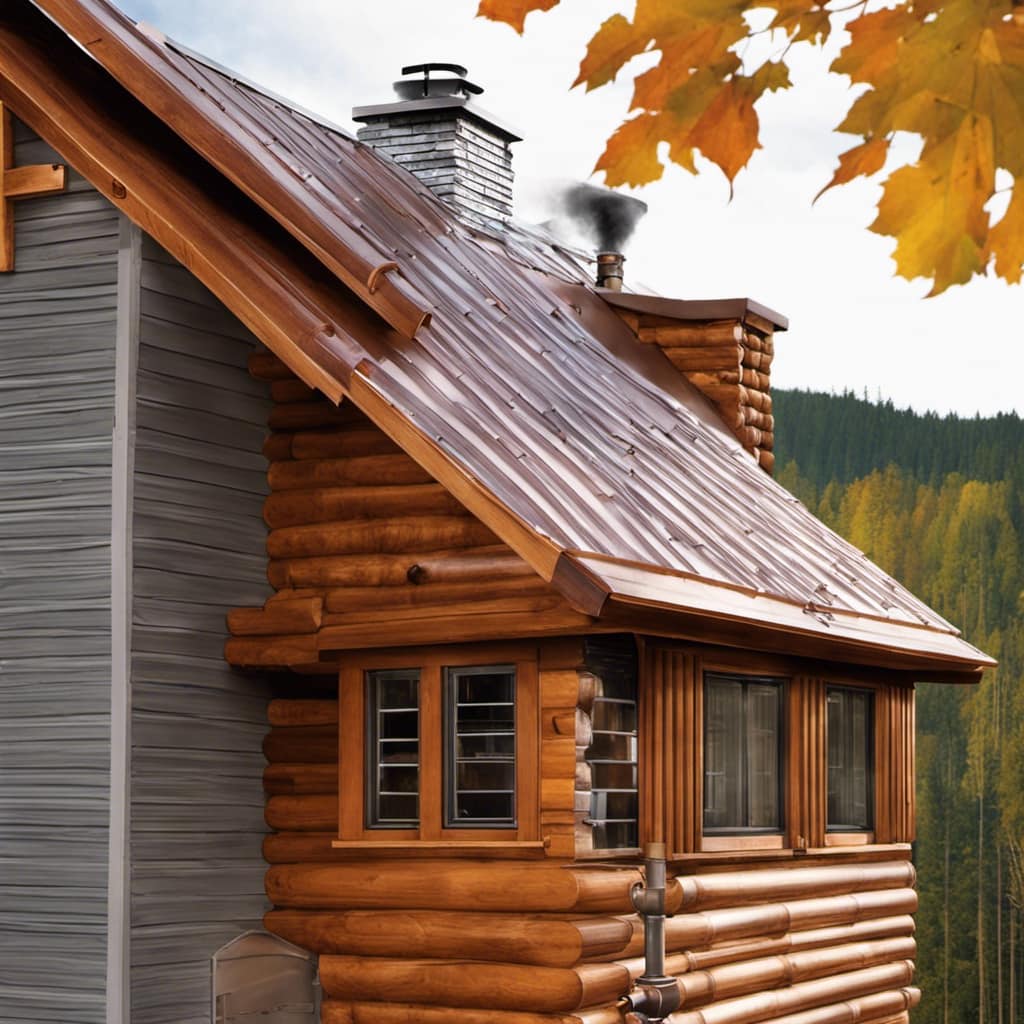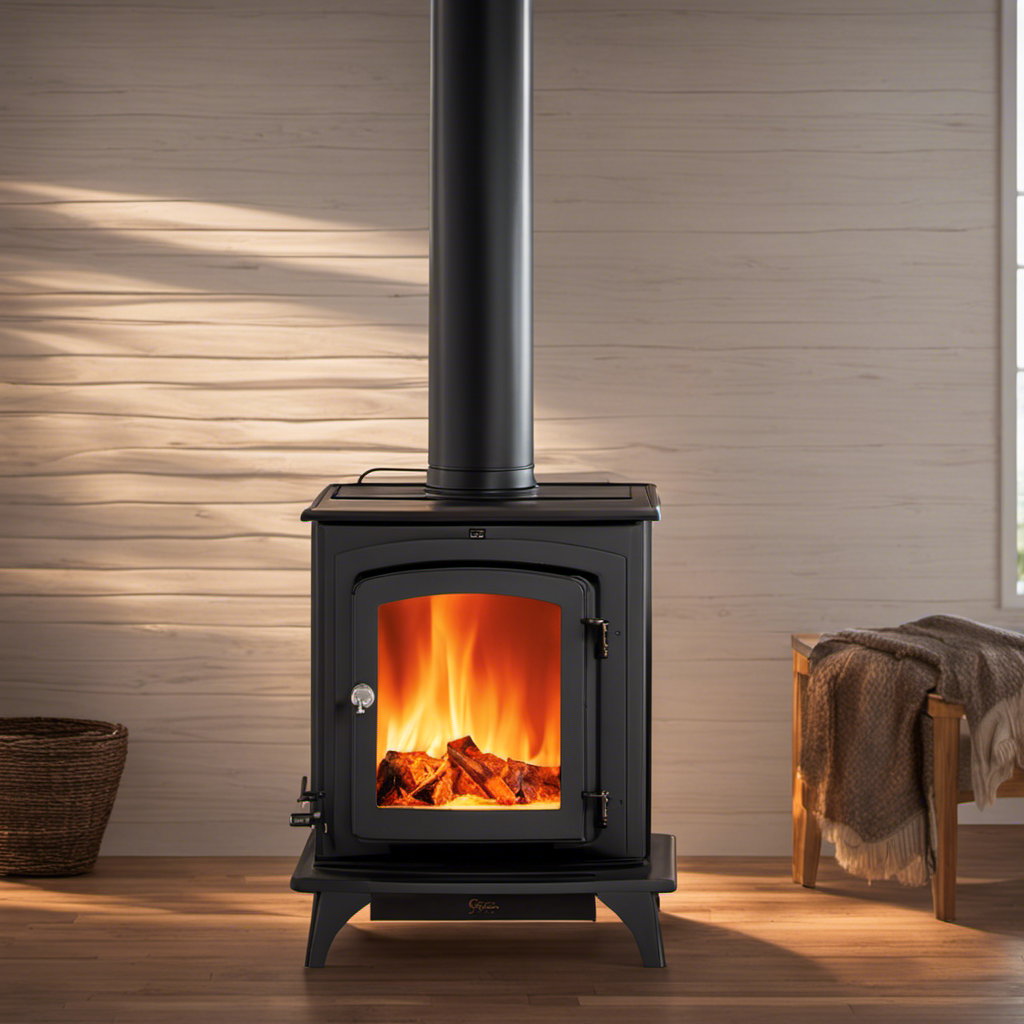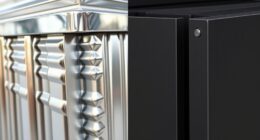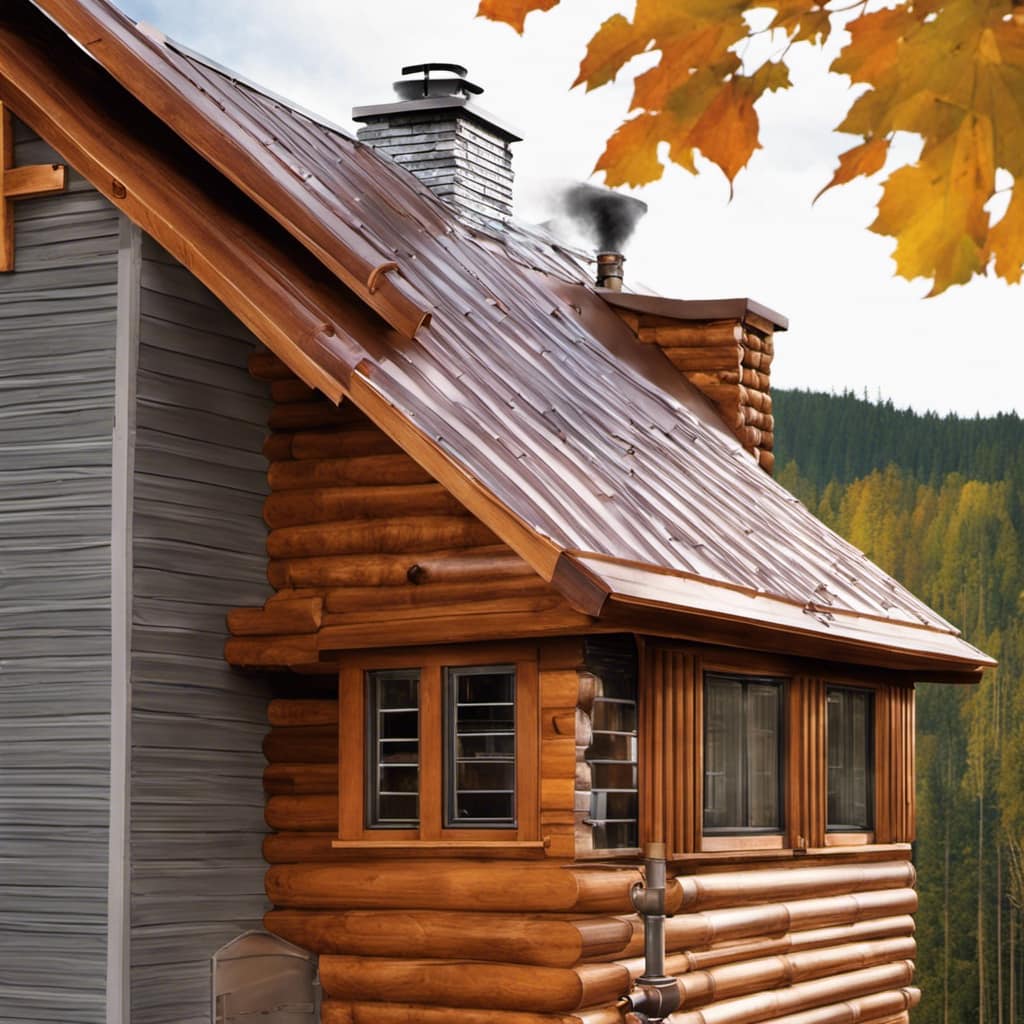
Were you aware that by correctly adjusting the vents on your wood stove, you can increase its efficiency by as much as 25%?
In this article, I will guide you through the steps to adjust the vents on your wood stove for optimal performance.
Understanding the ventilation system, identifying the vent controls, and fine-tuning the primary and secondary air vents are all crucial aspects that I will cover.
Say goodbye to inefficient heating and hello to a warm and cozy home.

Key Takeaways
- Proper ventilation improves wood stove efficiency by up to 25%.
- There are two main vent controls: primary and secondary.
- Adjusting the primary air vent regulates airflow and combustion.
- Fine-tuning the secondary air vent promotes better combustion and temperature control.
Understanding the Ventilation System
I need to understand the ventilation system in order to properly adjust the vents on my wood stove. Proper ventilation is crucial for the efficient and safe operation of a wood stove. It ensures that the combustion process is optimized, allowing for maximum heat output and minimizing the risk of dangerous fumes.
There are different types of wood stove ventilation systems, including natural draft and direct vent. Natural draft systems rely on the buoyancy of hot gases to create airflow, while direct vent systems use a sealed combustion chamber and an external vent to bring in fresh air. Understanding the type of ventilation system your wood stove has is essential for making the right adjustments.
Now that I understand the importance of proper ventilation and the different types of wood stove ventilation systems, I can move on to identifying the vent controls.
Identifying the Vent Controls
There are two main vent controls on the wood stove: the primary control and the secondary control. It’s crucial to understand the differences between these two vents to ensure optimal performance and safety.
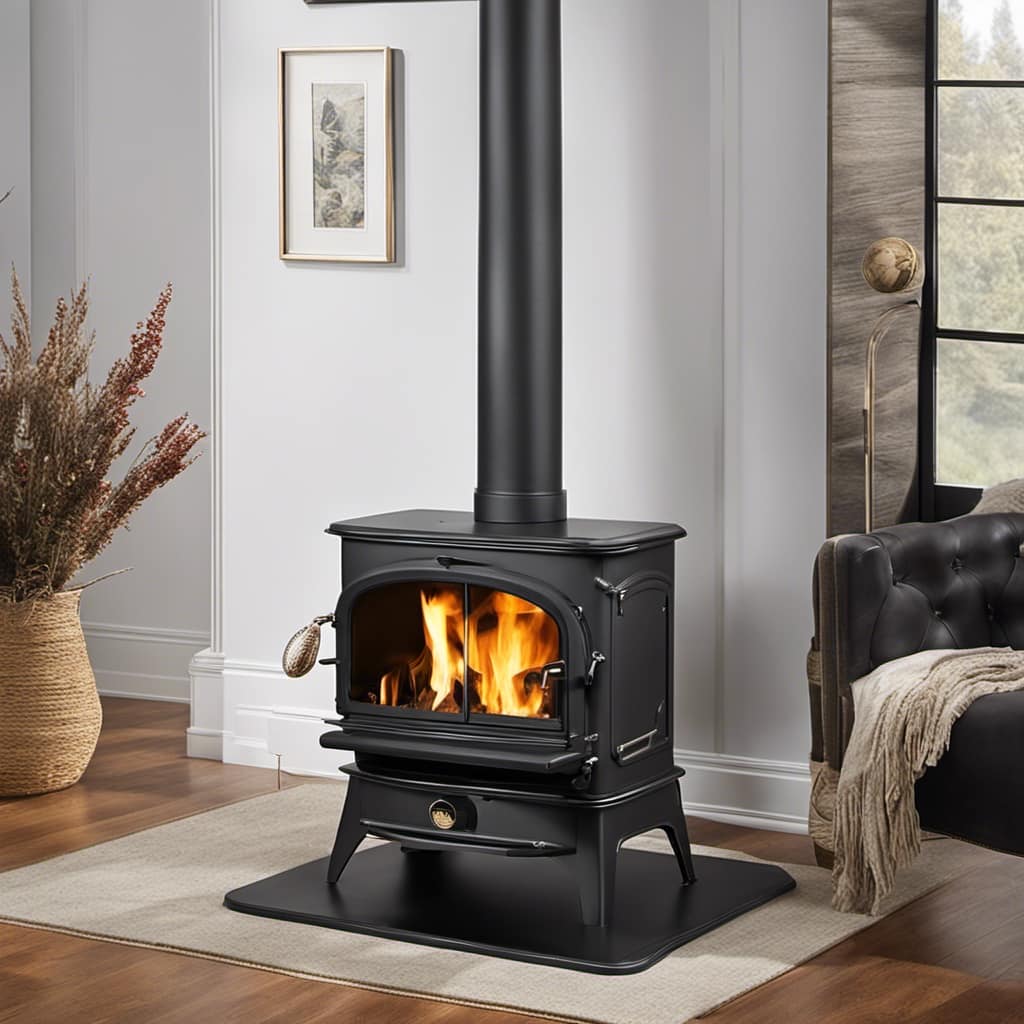
The primary control, located at the bottom of the stove, regulates the amount of air entering the firebox. By adjusting this vent, you can control the intensity of the fire.
On the other hand, the secondary control is situated above the firebox and controls the airflow that circulates around the fire. This vent is responsible for reducing smoke and increasing the stove’s efficiency.
When adjusting the vents, it’s essential to avoid common mistakes such as fully closing the primary vent, which can cause poor combustion and excessive smoke. Likewise, opening the secondary vent too wide can lead to overheating and wasted fuel.
A balanced adjustment of both vents is crucial for proper wood stove operation.

Adjusting the Primary Air Vent
To achieve optimal performance, I need to carefully adjust the primary air vent on my wood stove. The primary air vent is responsible for adjusting the airflow and regulating combustion inside the stove. By controlling the amount of oxygen that enters the firebox, I can determine the intensity of the fire and the rate at which the wood burns.
To adjust the primary air vent, I start by turning the control knob counterclockwise to increase the airflow or clockwise to decrease it. It’s important to make small adjustments and observe the flame to ensure proper combustion. By finding the right balance of air, I can optimize the stove’s efficiency and heat output.
Now, let’s move on to fine-tuning the secondary air vent to further enhance performance.
Fine-tuning the Secondary Air Vent
As I adjust the secondary air vent, I can fine-tune the airflow to improve the combustion efficiency of my wood stove. The secondary air vent plays a crucial role in controlling temperature and ensuring optimal burning conditions.
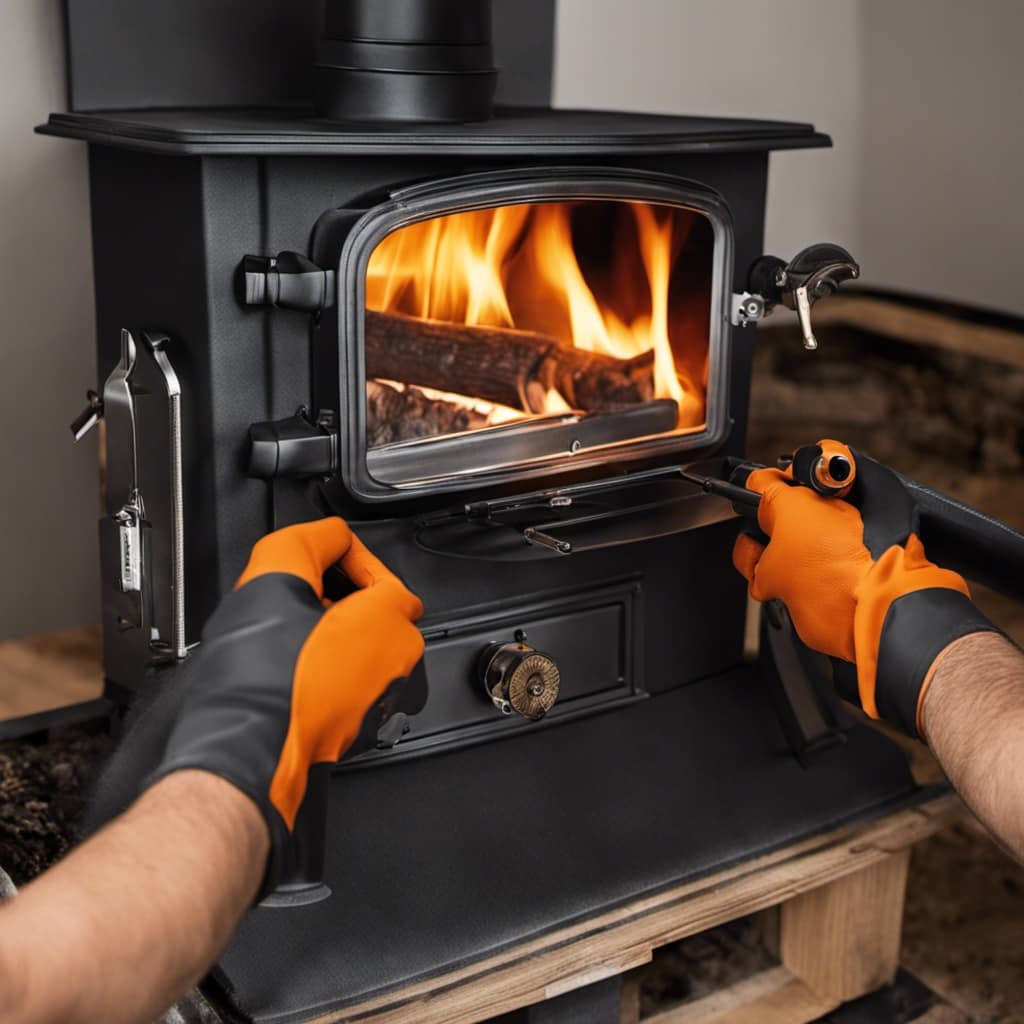
By adjusting this vent, I can regulate the amount of oxygen that enters the firebox, which directly affects the secondary air flow. Increasing the secondary air flow promotes more complete combustion, resulting in a hotter and cleaner burn. Conversely, decreasing the secondary air flow can help lower the temperature and slow down the burn rate.
It’s important to monitor the temperature closely and make small adjustments to the secondary air vent as needed to maintain the desired heat output. Troubleshooting ventilation issues may arise if the secondary air vent isn’t properly adjusted, leading to poor combustion, excessive smoke, or difficulty in controlling the temperature.
Troubleshooting Ventilation Issues
I’m experiencing some ventilation issues with my wood stove, and I need to troubleshoot them to ensure proper airflow. Ventilation problems can be frustrating and impact the overall performance of the wood stove.
To help you tackle these issues, here are three common ventilation problems and steps to troubleshoot the secondary air vent:

- Insufficient airflow:
- Check for any blockages in the air intake and flue pipe.
- Clean them if necessary.
- Ensure that the damper is fully open to allow maximum airflow.
- Excessive smoke:
- Adjust the secondary air vent by opening it slightly to increase the oxygen supply and reduce smoke production.
- Make sure the vent isn’t fully closed, as this can cause poor combustion.
- Backdrafting:
- Inspect the chimney for any obstructions or creosote buildup.
- Clean the chimney if needed.
- Installing a draft inducer can also help regulate airflow and prevent backdrafting.
Frequently Asked Questions
How Often Should the Vents on a Wood Stove Be Adjusted?
I adjust the vents on my wood stove as needed. Signs that indicate adjustment is necessary include inconsistent heat output or difficulty maintaining a fire. Regular monitoring ensures optimal performance.
Can the Primary and Secondary Air Vents Be Adjusted at the Same Time?
Adjusting the primary and secondary air vents simultaneously on a wood stove can be done, but it has its pros and cons. It allows for precise control of airflow, but can also affect combustion efficiency.
Are There Any Safety Precautions to Keep in Mind When Adjusting the Vents?
When adjusting wood stove vents, it’s important to follow safety precautions. Ensure the stove is cool, wear protective gloves, and use caution when handling hot surfaces. Proper ventilation and knowledge of your stove’s specific instructions are key to adjusting vents safely.
Can the Vents Be Adjusted to Control the Intensity of the Fire?
Yes, the vents on a wood stove can be adjusted to control the intensity of the fire. By regulating the airflow, you can increase or decrease the heat output and maintain optimal heating efficiency.
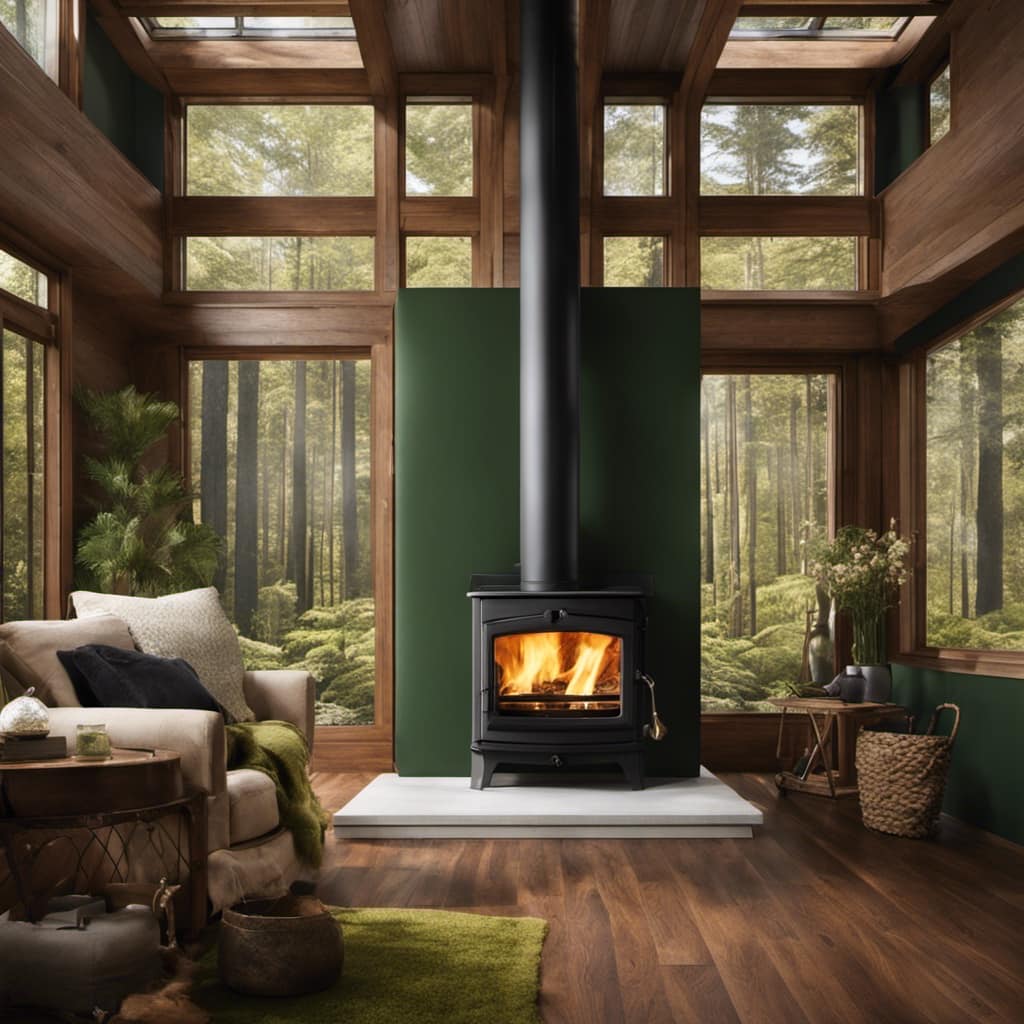
Are There Any Specific Tools Required to Adjust the Vents on a Wood Stove?
Specific tools are not necessary to adjust the vents on a wood stove. By using the built-in controls, I can easily regulate the air flow and adjust the intensity of the fire.
Conclusion
In conclusion, adjusting the vents on a wood stove is crucial for maintaining optimal airflow and achieving efficient combustion. By understanding the ventilation system, identifying the vent controls, and properly adjusting the primary and secondary air vents, you can ensure better control over the stove’s heat output.
Remember, a well-adjusted wood stove not only provides warmth but also helps to reduce fuel consumption and minimize environmental impact. So take the time to master the vent adjustments and enjoy a cozy and sustainable heating experience.
And remember, ‘Don’t let your wood stove burn out, keep those vents dialed in!’ ‘Your home will stay warm, your fuel bills will stay low, and the planet will thank you.’

Growing up surrounded by the vast beauty of nature, Sierra was always drawn to the call of the wild. While others sought the comfort of the familiar, she ventured out, embracing the unpredictable and finding stories in the heartbeat of nature.
At the epicenter of every remarkable venture lies a dynamic team—a fusion of diverse talents, visions, and passions. The essence of Best Small Wood Stoves is crafted and refined by such a trio: Sierra, Logan, and Terra. Their collective expertise has transformed the platform into a leading authority on small wood stoves, radiating warmth and knowledge in equal measure.

